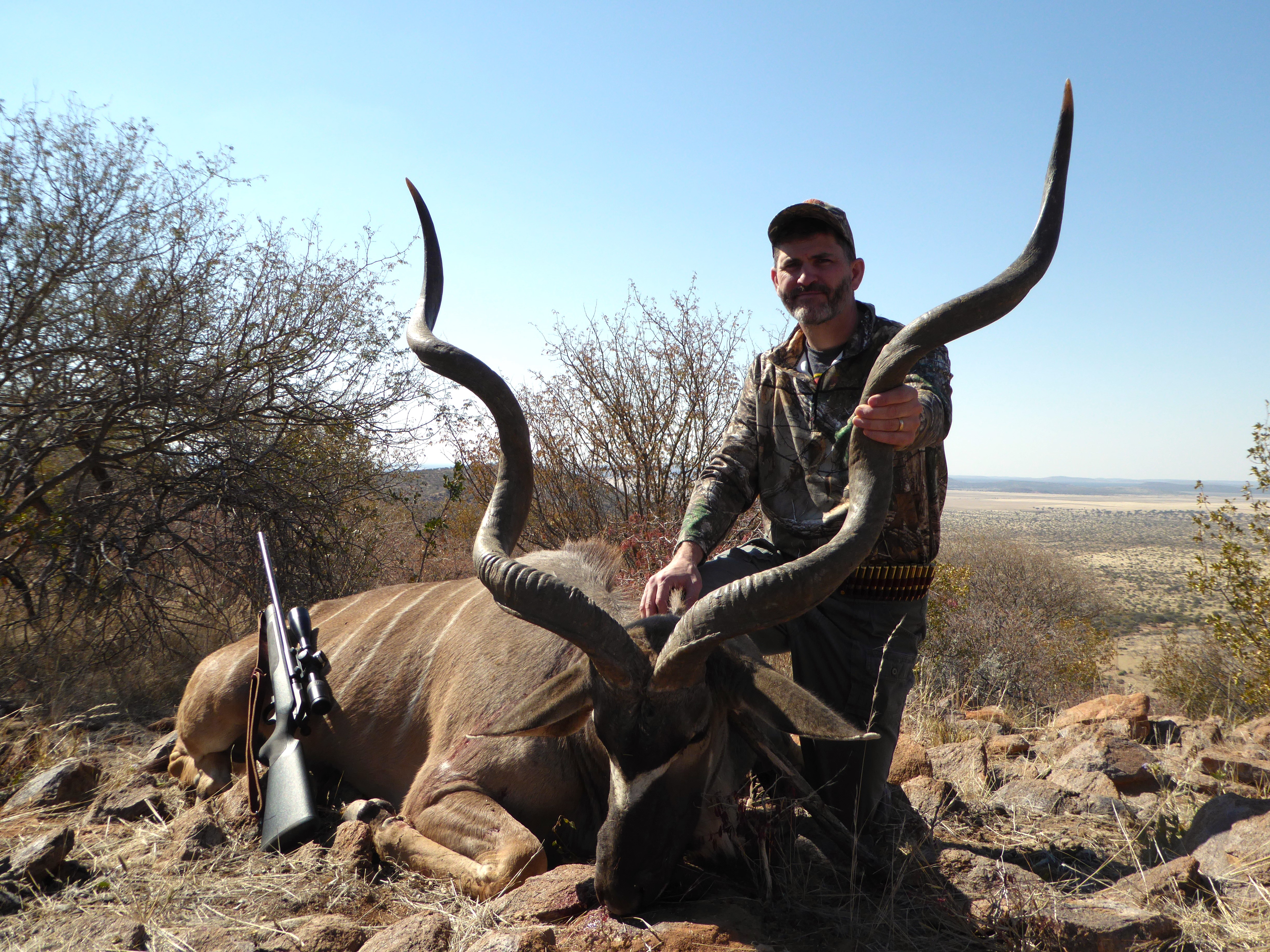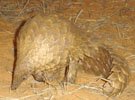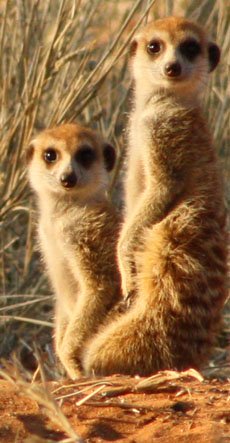For more information about our hunting safaris, don’t hesitate to reach out and contact us!
Trophy Hunting vs Management Hunting
Understanding the Balance
Compare: trophy hunting vs management hunting?
In the heart of the Kalahari, where
red sand stretch endlessly and the sky becomes your ceiling, hunting is more
than a pursuit — it’s a relationship with nature.
At Uitspan Ranch, we believe
in ethical, purpose-driven hunting that respects wildlife and sustains the land
we call home. But what’s the difference between trophy hunting and management
hunting, and why does it matter?
Let’s walk through the pros and cons of each, so you can better understand how they shape conservation, community, and the hunter’s experience.
Trophy Hunting: Honoring the Exceptional
Definition: Trophy hunting targets mature animals with exceptional physical traits — such as large horns, antlers, or tusks — often as a way to commemorate the hunt and the connection to nature.
Pros
Conservation Funding
Generally trophy fees support anti-poaching efforts, habitat protection, and wildlife research.
At Uitspan Ranch, trophy hunting isn’t just about pursuing exceptional animals—it’s a cornerstone of our conservation strategy. The funds generated from these hunts directly support the reintroduction of native and regionally compatible species into the Kalahari ecosystem. Through this ethical cycle, every hunt plays a vital role in restoring biodiversity, enriching wildlife populations, and sustaining the delicate balance of our land.
While Springbok, Gemsbok, Kudu, Duiker, Steenbok and Hartebeest were on our land since the earliest generation, we've used funds of trophy hunters to reintegrate the following species on our land: Giraffe, Impala, Eland, Sable, Nyala, Blue and Black Wildebeest, Blesbok and Waterbuck.
We salute you, hunting friends of Uitspan Ranch, who played the vital role in conservation here!
Selective Harvesting
Mature males past their prime breeding years are typically chosen, minimizing impact on population dynamics.
Economic Impact
High-value hunts contribute significantly to local economies and community development.
Because of accommodating trophy hunting, through the years we on Uitspan Ranch could employ more people and therefor give them a good income and better life in general.
“The trophy is not just a mount on the wall — it’s a symbol of your role in protecting the wild for generations to come.”
Cons
Misunderstood by the Public
Trophy hunting is often criticized due to misconceptions or unethical practices in unregulated areas.
At Uitspan, no part of a trophy-hunted animal is wasted. All meat is utilized, including the intestines, which hold cultural significance and are highly valued by certain Namibian communities.
Ethical hunters ensure that the entire animal is used, often preserving the meat for personal consumption, dispelling the misconception that trophy hunting results in discarded carcasses.
Pressure on Iconic Species
If not carefully managed, it can lead to targeting of rare or genetically valuable animals.
Management Hunting: Stewardship in Action
Management hunting focuses mainly on population control, removing animals that are old, injured, genetically weak, or overrepresented in an area - to maintain ecological balance.
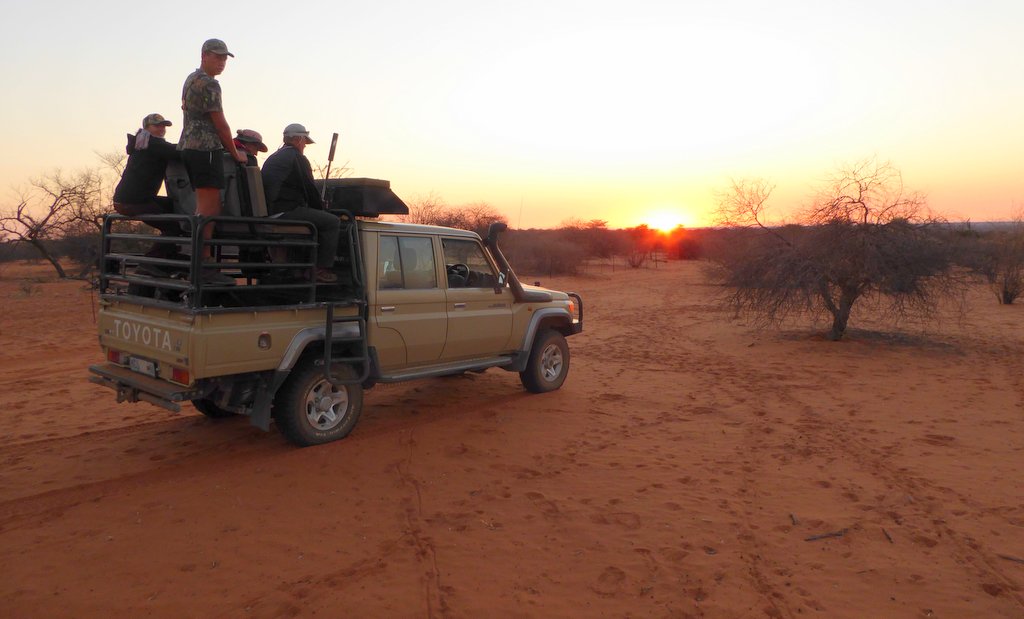 A dry, barren Kalahari landscape.
Every hunt has a purpose - this one ensures balance in the ecosystem.
A dry, barren Kalahari landscape.
Every hunt has a purpose - this one ensures balance in the ecosystem.Pros
Ecological Health
Management hunting helps prevent overpopulation, desease spread, and habitat degradation.
In the Kalahari, where Uitspan Ranch is located, nature follows harsh drought cycles. To protect fragile vegetation and prevent overgrazing, we actively manage herd numbers. This ensures that wildlife and habitat stay in balance, even during dry years.
Genetic Integrity
Removes animals with poor traits, supporting stronger future generations.
Meat Utilization
Often provides high-quality meat for local communities and hunters.
Since we have a registered local abattoir on Uitspan, all meat are processed and used for other communities in Namibia where meat is scarce.
Cost-Effective
Management hunts are generally more affordable for hunters with a tight budget, making it accessible to a wider range of hunters.
“Every management hunt is a quiet act of conservation — a way to ensure the land thrives and the herds remain strong.”
Cons
Less Glamour
These hunts may lack the prestige or visual appeal of trophy hunts.
Requires Expertise
Identifying which animals to remove demands deep knowledge of herd dynamics and genetics.
Thankfully we have been blessed with several generations on this land who've built up an intense love and knowledge of the intricate and delicate systems of life and death in the Kalahari nature.
Lower Revenue
Management hunts typically generate less income, which can limit conservation funding.
Why We Offer Both Trophy Hunting and Management Hunting at Uitspan Ranch
Here in the Kalahari, we don’t just hunt — we steward. Trophy hunting and management hunting are two sides of the same coin, each playing a vital role in sustainable wildlife management. By offering both, we ensure:
“Follow in the footsteps of the Bushmen and discover the uniqueness of hunting in the great Kalahari of Namibia.”
Final Thoughts
Whether you’re drawn to the majesty of a Greater Kudu’s spiral horns or the quiet satisfaction of helping maintain balance in a herd, your hunt matters. It’s not just about the animal — it’s about the story, the land, and the legacy you leave behind.
“To hunt in Namibia is to walk with purpose — to feel the heartbeat of the land and leave it better than you found it.”
At Uitspan Ranch, we invite you to hunt with purpose. To walk in the footsteps of the Bushmen. To feel the heartbeat of the Kalahari.
And to know that your presence here makes a difference.
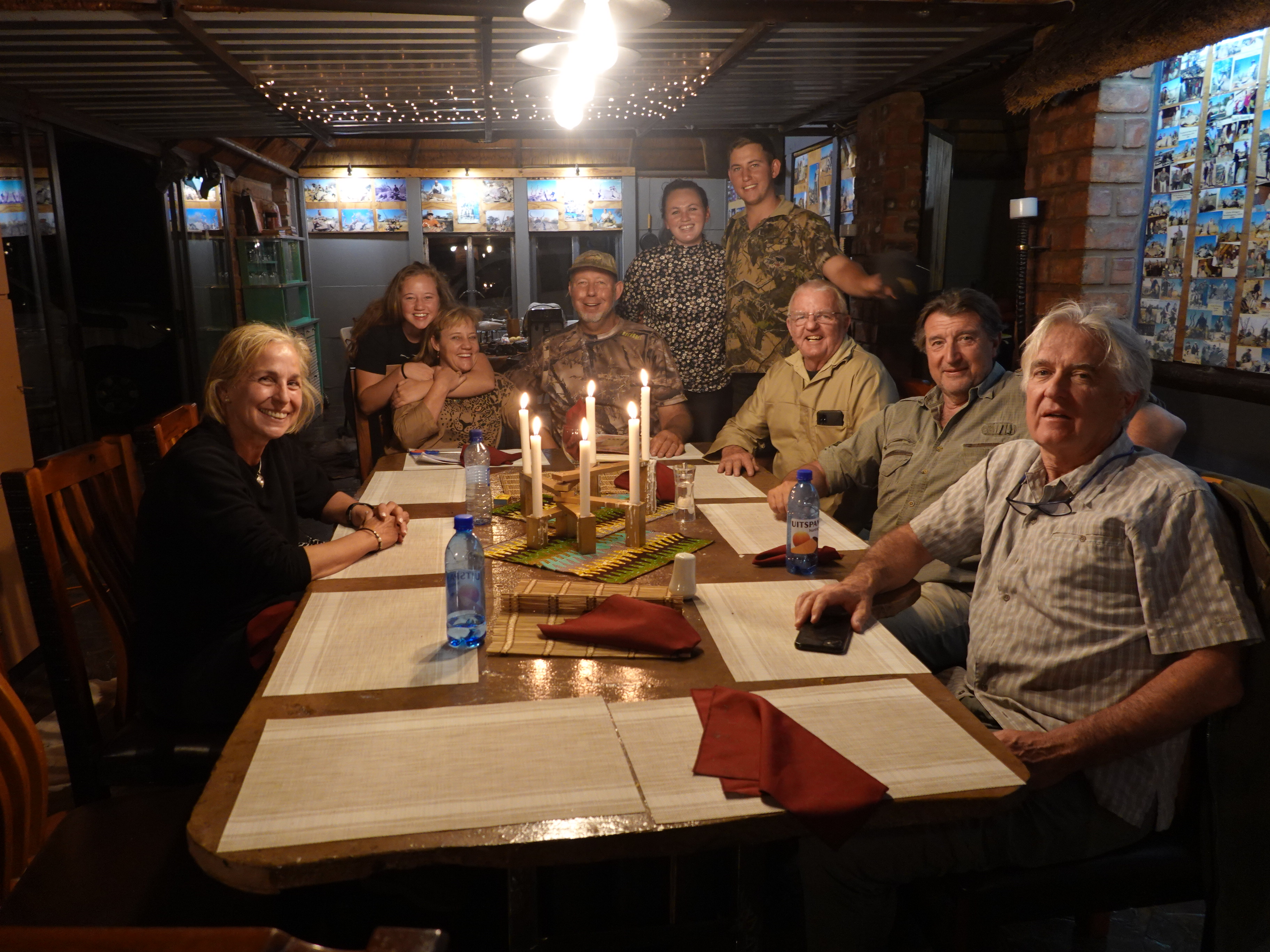 International hunting guests at Uitspan Ranch in Namibia, celebrating ethical hunting and cultural exchange.
International hunting guests at Uitspan Ranch in Namibia, celebrating ethical hunting and cultural exchange.Join the legacy
— hunt with purpose, and leave a footprint of conservation in Namibia.
Meaning of "Uitspan"
'Uitspan' is an Afrikaans word that means place of rest.
When the Boer settlers moved inland in Southern Africa in the 1800's, they used ox carts. When they found a spot with game, water and green grass, they arranged their ox carts into a circular laager for protection against wild animals and stopped for a rest.
They referred to such an action of relaxation for man and beast, as Uitspan.
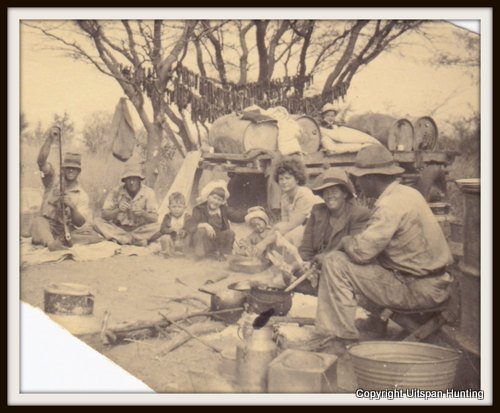
(Picture above of our ancestors.)
Did you know?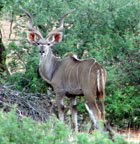 Greater Southern Kudus are famous for their ability to jump high fences. A 2 m (6.56 ft) fence is easily jumped while a 3 m (9.84 ft) high fence is jumped spontaneously. These strong jumpers are known to jump up to 3.5 m (11.48 ft) under stress. |
Did you know? Some animals have one sense more than man!The flehmen response is a particular type of curling of the upper lip in ungulates, felids and many other mammals. This action facilitates the transfer of pheromones and other scents into the vomeronasal organ, also called the Jacobson's Organ. Some animals have one sense more than man!The flehmen response is a particular type of curling of the upper lip in ungulates, felids and many other mammals. This action facilitates the transfer of pheromones and other scents into the vomeronasal organ, also called the Jacobson's Organ.This behavior allows animals to detect scents (for example from urine) of other members of their species or clues to the presence of prey. Flehming allows the animals to determine several factors, including the presence or absence of estrus, the physiological state of the animal, and how long ago the animal passed by. This particular response is recognizable in males when smelling the urine of a females in heat. |
